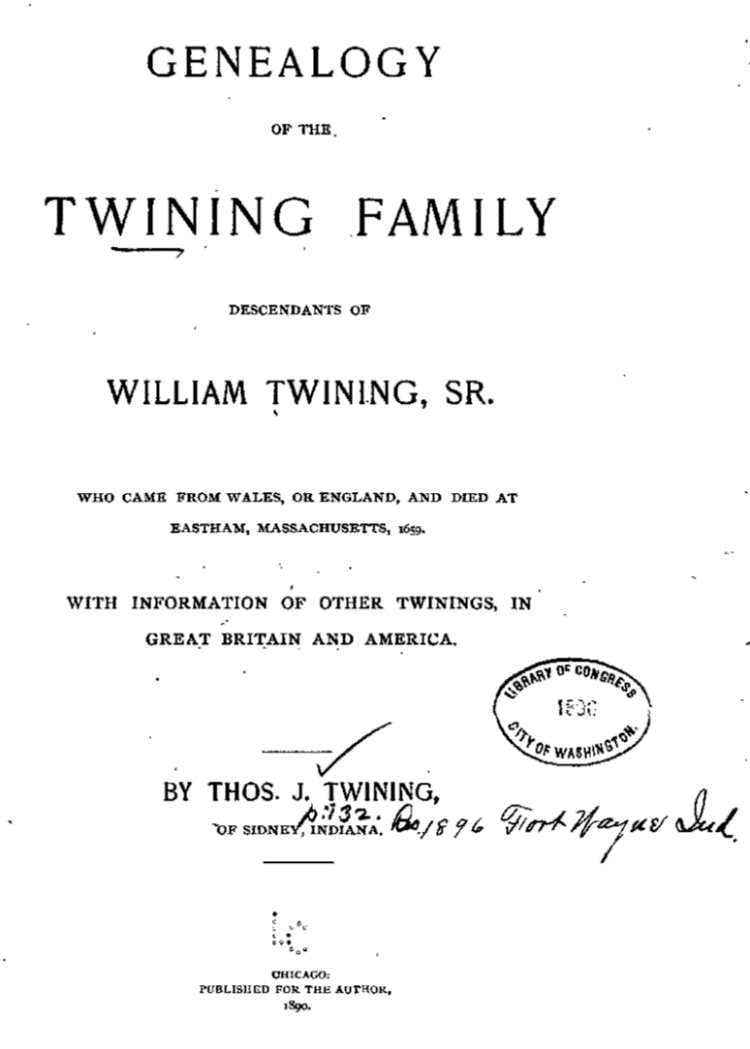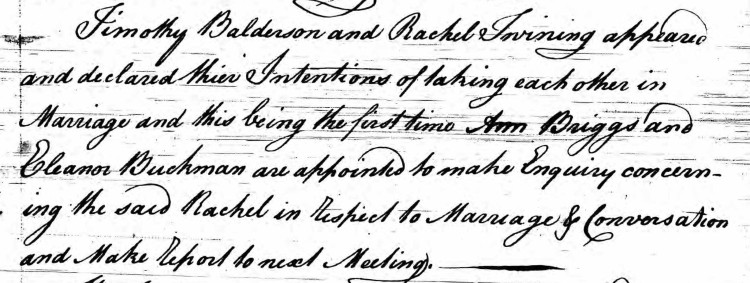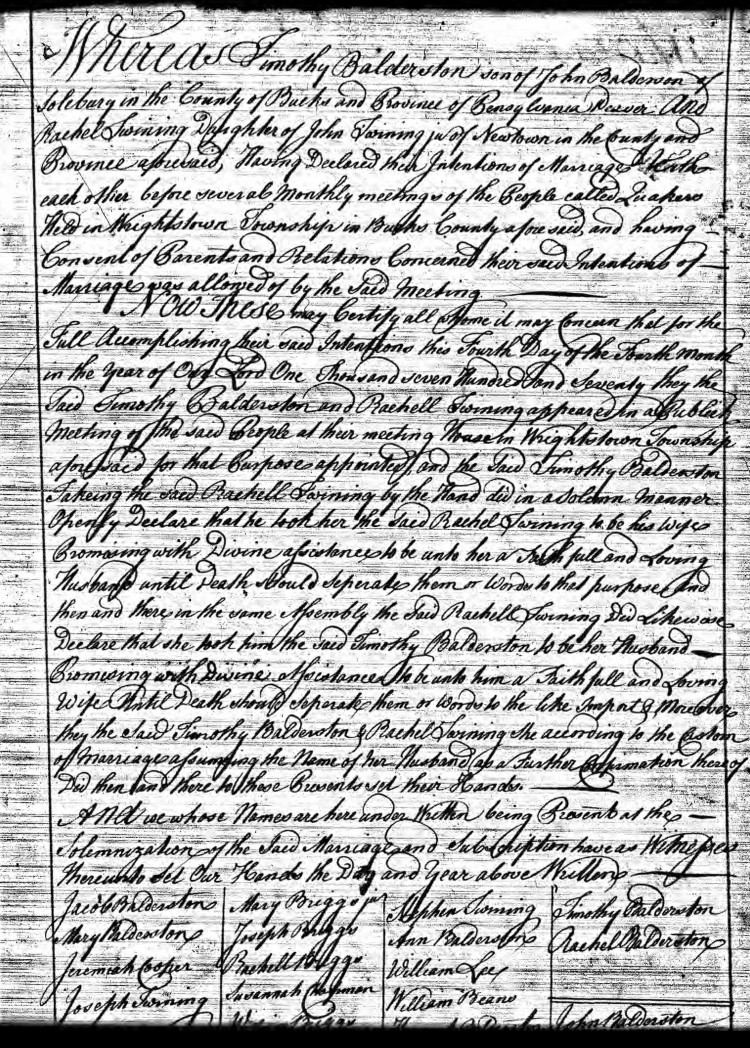“Regarding the family of Twining, its origin, and significance of name, nothing is definitely known. Whether of Celtic or Anglo-Saxon beginning is not absolutely clear, although the burden of evidence thus far points to an Anglo-Saxon rather than a purely Welsh or Celtic origin. Traditions of the American family, with few exceptions, point to Wales as the place from which our ancestor came. This at the best would not prove a prior descent, and therefore leaves the question open to further enquiry and examination.” From: GENEALOGY OF THE TWINING FAMILY, DESCENDANTS OF WILLIAM TWINING, SR., WHO CAME FROM WALES, OR ENGLAND, AND DIED AT EASTHAM, MASSACHUSETTS, 1659., WITH INFORMATION OF OTHER TWININGS, IN GREAT BRITAIN AND AMERICA. By Thomas J. Twining of Sydney, Indiana, Published for the Author, Chicago, 1890, p7.

Unlike many other “vanity” works that I have looked at, this one is replete with citations and documentation and, running to roughly two-hundred pages in length, gives the impression that serious research was done by the author.
While I have some evidence of the family line prior to the William Twining (a 10th great grandfather) from the title of the book, it is, at this stage, speculative.
Note: Names in bold are my direct ancestors.
“What may be safely held for fact is that the ancestor of the American family was Anglo-Saxon and Puritan. The race-type remains in the family today – the sanguine temperament, the fair skin, the blue eyes, (often with the intent look that led Tacitus to call them truces), which the Romans saw eighteen centuries ago, and the same love of honest dealing and fair play. That he was Puritan hardly needs proof. It would require strong evidence to show that he could have been other, when the whole middle and professional class in England was Puritan.”
William Twining (1599-1659) was born in England, possibly at Painswick, Gloustershire, around 1599. He married in England and had two children, Isabel and William. The name of this first wife is unknown. It seems likely that she may have died in England, or she may have possibly died in Yarmouth or Eastham prior to William’s second marriage.
Sometime before 1640, William came to New England with his family. In roughly June 1641, they moved from Plymouth to Yarmouth, Barnstable, Massachusetts, and his name is found in court records there at that time, as a resident of Yarmouth.
His daughter Isabel was married in Yarmouth that same month, to Francis Baker. This indicates either they might have known Baker in Hertfordshire, where Baker originated, or they might have been in contact in Plymouth before they came to Yarmouth.
William settled in Yarmouth with his son William, and in 1643, his name was on a list of men able to bear arms. In 1645, he was one of five soldiers sent out against the Narragansett Indians. His first wife was certainly dead by 1652, for in that year he married Anne Doane in Yarmouth.
Anne was probably a sister of Deacon John Doane, who came from Wales to Plymouth in 1621, one of the first founders of Eastham, and assistant to Governor Thomas Prence of Plymouth in 1633. Their parents are unknown.
On May 13, 1654 William was granted land in Yarmouth and in 1655, he was made freeman, and that year he was also granted land in Poche, which later became Eastham, in Barnstable County. In 1659, he was granted more land in Poche.
William died in Eastham on April 15, 1659, and he is buried in the Cove Burying Ground in Eastham, Massachusetts. There is no marker.
His son, William Twining, was a deacon in the Eastham Congregational Church. Around 1650, while still in Massachusetts, he married Elizabeth Deane, daughter of Stephen Deane, of Plymouth, who came in the ship, “Fortune” in 1621 and built the first corn mill in New England in 1632. They had numerous children:
- Elizabeth, (m. John Rogers, 19 Aug. 1669),
- Anne (m. 3 Oct 1672 (1) Thomas Bills and (2) David Kelley),
- Susanna (b. 25 Jan 1654; d. young),
- William (m. Ruth Cole),
- Mehitable (d. bef 1726) (m. Daniel Doane [Richard Milhouse Nixon descends form this line]),
- Joanna (b. 30 May 1657)
- Stephen (b. 16-Feb-1659; d. 18-Feb-1720)
In 1659 Eastham granted him three and one-half acres for a house lot adjoining his father. In 1662 he was admitted and sworn to the Grand Jury at Eastham, and again three times in 1671. He owned and sold land at Bound Brook, Namakassett, Poche, Billingate, etc.
As late as 1681 he was “Deacon Twining” in the Congregationalist church. Sometime thereafter, he, his wife, and his son Stephen left the Congregationalist Church for the Society of Friends.
From the years 1670 to 1700 there was a large migration from many parts of New England to Long Island, Eastern New Jersey, and later Pennsylvania due to persecution of Quakers, and other “heretics”.
In 1695 William appears on the Eastham records for the last time as a voter, and that same year he and his wife removed to Newtown, Bucks County, Pennsylvania. He was accompanied by his son Stephen, and his family. Their names appear in the Middletown Meeting records in 1699. William’s other children remained in Massachusetts and remained in the Congregationalist church.
I have not uncovered any documented reason for the apparent religious schism within the family.
William died in Newtown in 1703 and is buried in the Middletown Friends Cemetery in Langhorne (Formerly Attleborough), Bucks County, Pennsylvania.
Stephen Twining, son of William, who came to Newtown with his family and his father, owned 800 acres of land in Bucks County, besides considerable property in Eastham. He was appointed Overseer and Elder in Society of Friends in 1713 and 1715, respectively. The Monthly Meeting Records show him to have been an active and leading member of the Society, his name appearing very frequently on the meeting minutes.
Stephen Twining (1659-1720) married Abigail Young (1660-1715) and together they had nine children:
- Stephen (1684-1772)
- Eleazer (1686-1716)
- Nathaniel (1689-1753)
- Mercy (1690-1726)
- Rachel (1692-1777)
- John (1692-1775)
- Joseph (1696-1719)
- David (1700-1711)
- William (1703-1716)
John Twining (1692-1775) was a farmer and in 1718 married Elizabeth Kirk (1696-1774), the sister of his brother Nathaniel’s wife, and together they had nine children:
- John (1719-1792)
- Joseph (1720-1733)
- David (1772-1791)
- Eleazer (1724-1814)
- William (1726-1814)
- Thomas (1728-1733)
- Jacob (1730-1804)
- Jacob (1730-1804)
- Rachel (1732-1733)
- Stephen (1734-1810)
John Twining (1719-1792) married Sarah Dawes (1723-1826) and together they had four children:
- Joseph (1748-1821)
- Rachel (1751-1797)
- Elizabeth (1753-1816)
- Mary (1755-1794)
The Twining branch merged into the Balderston branch when Rachel married Timothy Balderston (1745-1827) in 1770.


Timothy and Rachel had six children before her death in 1797 at the age of forty-six.
- John (1779-1828)
- David (1781-1860)
- Mary (1783-????)
- Lydia (1790-1854)
- Timothy (1793-1864)
- Isaiah (1796-1878)
Rachel and her husband are buried in the Makefield Friends Burial Grounds, Dolington, Bucks County, Pennsylvania, USA